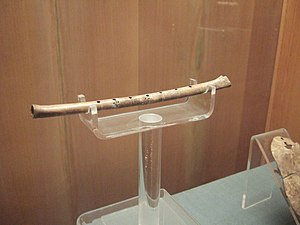
The flute is a member of a family of musical instruments in the woodwind group. Like all woodwinds, flutes are aerophones, producing sound with a vibrating column of air. Unlike woodwind instruments with reeds, a flute produces sound when the player's air flows across an opening. In the Hornbostel–Sachs classification system, flutes are edge-blown aerophones. A musician who plays the flute is called a flautist or flutist.

Woodwind instruments are a family of musical instruments within the greater category of wind instruments. Common examples include flute, clarinet, oboe, bassoon, and saxophone. There are two main types of woodwind instruments: flutes and reed instruments. The main distinction between these instruments and other wind instruments is the way in which they produce sound. All woodwinds produce sound by splitting the air blown into them on a sharp edge, such as a reed or a fipple. Despite the name, a woodwind may be made of any material, not just wood. Common examples include brass, silver, cane, as well as other metals such as gold and platinum. The saxophone, for example, though made of brass, is considered a woodwind because it requires a reed to produce sound. Occasionally, woodwinds are made of earthen materials, especially ocarinas.

An aerophone is a musical instrument that produces sound primarily by causing a body of air to vibrate, without the use of strings or membranes, and without the vibration of the instrument itself adding considerably to the sound.
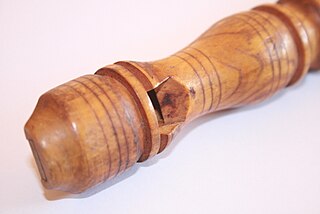
The term fipple specifies a variety of end-blown flute that includes the flageolet, recorder, and tin whistle. The Hornbostel–Sachs system for classifying musical instruments places this group under the heading "Flutes with duct or duct flutes." The label "fipple flute" is frequently applied to members of the subgroup but there is no general agreement about the structural detail of the sound-producing mechanism that constitutes the fipple, itself.

A bansuri is an ancient side-blown bamboo flute originating from India and Nepal. It is an aerophone produced from bamboo and metal like material used in many nepali lok songs. A bansuri is traditionally made from a single hollow shaft of bamboo with seven finger holes. Some modern designs come in ivory, fiberglass and various metals. The six hole instrument covers two and a half octaves of music. The bansuri is typically between 30 centimetres (12 in) and 75 centimetres (30 in) in length, and the thickness of a human thumb. One end is closed, and few centimeters from the closed end is its blow hole. Longer bansuris feature deeper tones and lower pitches. The traditional design features no mechanical keys, and the musician creates the notes they want by covering and uncovering the various finger holes.
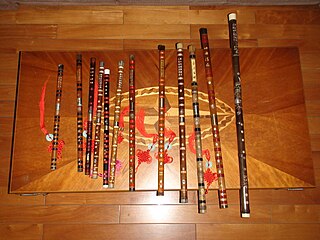
The dizi, is a Chinese transverse flute. It is also sometimes known as the di or héngdi, and has varieties including Qudi, Bangdi, and Xindi. It is a major Chinese musical instrument that is widely used in many genres of Chinese folk music, Chinese opera, as well as the modern Chinese orchestra. The dizi is also a popular instrument among the Chinese people as it is simple to make and easy to carry.
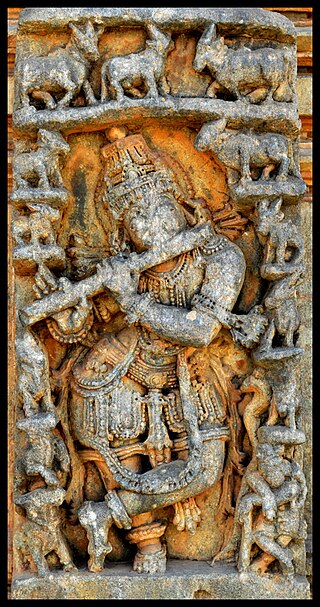
The bamboo flute, especially the bone flute, is one of the oldest musical instruments known. Examples of Paleolithic bone flutes have survived for more than 40,000 years, to be discovered by archaeologists. While the oldest flutes currently known were found in Europe, Asia too has a long history with the instrument that has continued into the present day. In China, a playable bone flute was discovered, about 9000 years old.

The end-blown flute is a woodwind instrument played by directing an airstream against the sharp edge of the upper end of a tube. Unlike a recorder or tin whistle, there is not a ducted flue voicing, also known as a fipple. Most rim-blown flutes are "oblique" flutes, being played at an angle to the body's vertical axis. A notched flute is an end-blown flute with a notch on the blowing surface. A lip-valley flute is a type of notched flute.
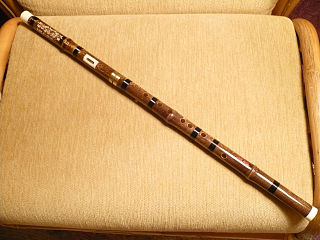
The bawu is a Chinese wind instrument. Although shaped like a flute, it is actually a free reed instrument, with a single metal reed. It is played in a transverse (horizontal) manner. It has a pure, clarinet-like timbre and its playing technique incorporates the use of much ornamentation, particularly bending tones.
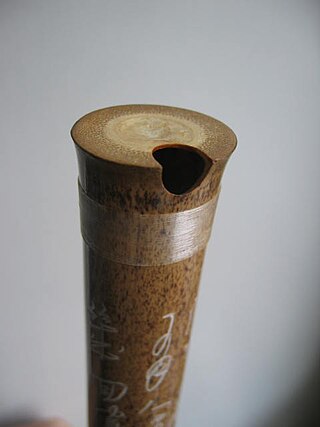
The xiao is a Chinese vertical end-blown flute. It is generally made of bamboo. It is also sometimes called dòngxiāo, dòng meaning "hole." An ancient name for the xiāo is shùzhúdí but the name xiāo in ancient times also included the side-blown bamboo flute, dizi.

The hulusi, also known as the cucurbit flute and the gourd flute, is a free reed wind instrument from China, Vietnam, and the Shan State, played also by the indigenous people of Assam. It is held vertically and has three bamboo pipes that pass through a Calabash gourd wind chest; the center pipe has finger holes and the outer two are typically drone pipes. It is not uncommon for a hulusi to have only one drone pipe while the second outer pipe is merely ornamental. The drone pipe has a finger hole which allows it to be stopped. Advanced configurations have keyed finger holes similar to a clarinet or oboe, which can greatly extend the range of the hulusi to several octaves.

Traditional Korean musical instruments comprise a wide range of string, wind, and percussion instruments. Many traditional Korean musical instruments derive from Chinese musical instruments.

The tunso is a Korean notched, end-blown vertical bamboo flute used in Korean traditional music. It is similar to the danso, but longer and larger. The hanja tong (洞) was used to describe the shape of the instrument that resembles a long cave.
Jiangnan sizhu is a style of traditional Chinese instrumental music from the Jiangnan region of China.
The xindi is a Chinese musical instrument. A 20th-century derivative of the ancient dizi, the xindi is western influenced, fully chromatic, and usually lacks the dizi's distinctive di mo, or buzzing membrane.
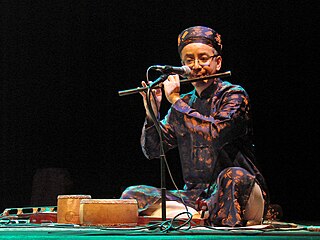
The sáo is a family of flutes found in Vietnam that is traditionally thought to contain the culture and spirit of Vietnam's countryside. The most common variety is played with the flutist holding the sáo transversely to the right side with their mouth placed at the blowing hole. Other varieties include the Sáo Dọc, a kind of recorder similar to the Thai Khlui, the Sáo Bầu, and the Sáo ôi, a recorder played by the Muong people. The sáo is usually performed solo or in an ensemble among other instruments in orchestras of Vietnamese popular opera Chèo, Chầu văn, and Nhã nhạc.

Bamboo's natural hollow form makes it an obvious choice for many musical instruments. In South and South East Asia, traditional uses of bamboo the instrument include various types of woodwind instruments, such as flutes, and devices like xylophones and organs, which require resonating sections. In some traditional instruments bamboo is the primary material, while others combine bamboo with other materials such as wood and leather.
The Limbe is a western concert flute with six finger holes from Mongolian folk music, which belongs to the nomadic pastoral culture and is usually played with circular breathing by experienced players. The continuous playing of the flute to accompany "long songs" lasting up to 25 minutes was added to the UNESCO Intangible Cultural Heritage Lists in urgent need of preservation in 2011. Like most other Mongolian musical instruments, the limbe is traditionally only allowed to be played by men. The origin of the East Asian flutes such as the limbe and the related dizi in China could be traced back to the 1st millennium BC.
